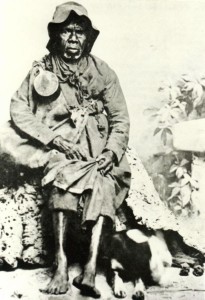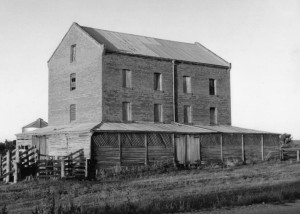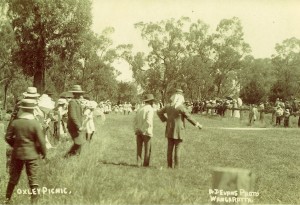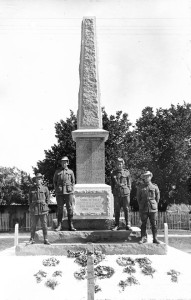The Bpangerang People(s)
The Bpangerang people were a nation of sub-clans who occupied much of what is now North Eastern Victoria stretching along the Tongala (Murray) River to Echuca and into the areas of the southern Riverina in New South Wales. Their land includes the Wangaratta, Yarrawonga and Shepparton areas through which the Kialla (Goulburn) and Torryong (Ovens) Rivers flow. The approximate boundaries are south to Mansfield, west to Echuca, east to Chiltern and north to near Narrandera in New South Wales.
Late picture of Mary Jane Milawa of the Bpangerang People courtesy Wangaratta Historical Society.
Explorers
Two Hundred Years ago in 1824 explorers Hume and Hovell passed through the area and Hovell observed “that land adjoining the river and surrounding areas was exceedingly good, with fine hills and grassland, it is as pretty a spot as I have seen since leaving home.”
On November 26, 1824 Hovell named the area Oxley Plains in recognition of the Surveyor General of the Colony of NSW, Sir John Oxley.
Note: The indigenous people of the area did not encounter white men again until twelve years later when Major Thomas Mitchell passed through in October 1836.
Early Settlement
In 1838 the first white settler, George Faithfull, took up the Oxley Plains Run consisting of some 92,000 acres where he ran sheep and cattle. He later built a homestead, which he called ‘Wangaratta’.
The Docker family, who relocated from New South Wales to nearby Bontharambo in February 1839, took up land at Oxley in September 1840 to run sheep.
Relations between the indigenous tribes and the white settlers varied between congenial and confrontational as further land was taken up for grazing.
Early Growth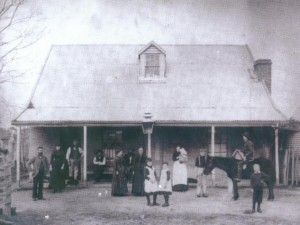
When gold was discovered in the Beechworth district in 1852, Oxley boomed because of its location on the main Cobb & Co route to the goldfields. With gold, bushrangers became active in the region, the most infamous being the Kelly Gang.
The town grew and by the 1870s buildings included two general stores, four hotels, various churches, a school, post office, butcher, baker, two shoemakers, blacksmith and police station.
Clancy’s Hotel, Circa 1880 now The Oxley Pantry (The Oxley Shop)
Oxley Flour Mill
Oxley Flour Mill Oxley Flour Mill built in 1868 by William Allen
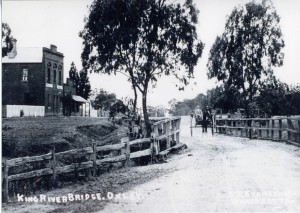 Township with King River Bridge in foreground, Robert Dunlop’s Hotel on left. circa 1880
Township with King River Bridge in foreground, Robert Dunlop’s Hotel on left. circa 1880
Local Government
In 1863 to improve travel through the area the first series of bridges were built across the King River flood plain by the Oxley Roads Board and in 1865 the Municipality-Shire of Oxley, Victoria was formed. The Oxley Shire Council was presented in 1985 with it’s own medal, the medal of Sesquicentenary of Victoria, Shire of Oxley.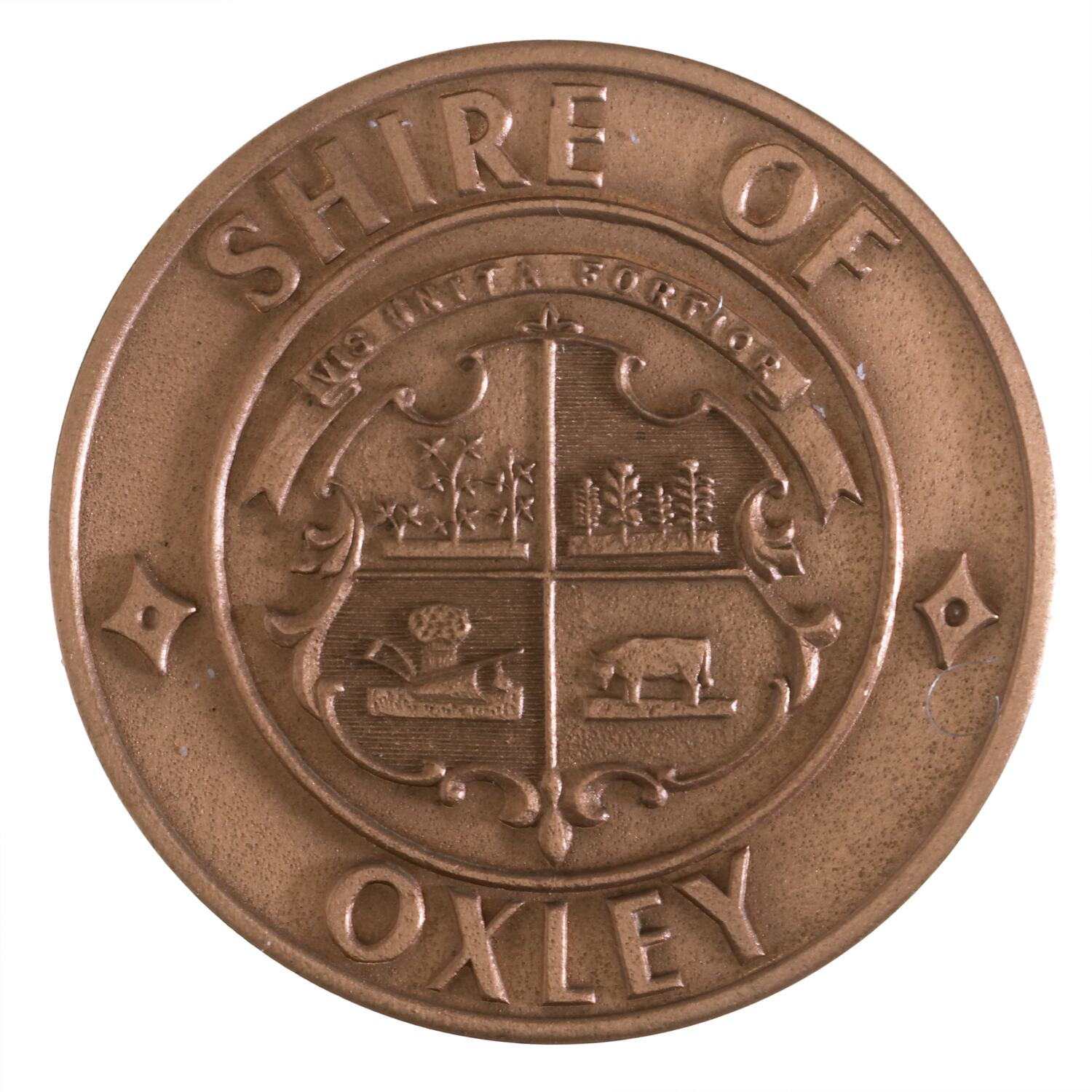
The Oxley Shire Hall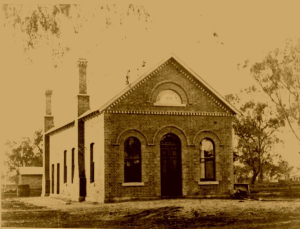
In 1875 the Oxley Shire Hall was built by Robert Montgomery at a cost of ₤591/17/10d ($1183.79). It was described as “a handsome brick building composed of a main hall and two offices.”
Note: Checkout the “Grand Reopening of the Historical Oxley Hall” booklet produced and released for “Reopening Event” that took place on Saturday 1st March 2003.
Note: Oxley residents will, on Saturday 28th June 2025, be celebrating 150 years since the Oxley Shire Hall was opened. (for event details refer to Latest Local News & Events page or Oxley Shire Hall website).
 Oxley residents enjoying the snow, 31 May 1913
Oxley residents enjoying the snow, 31 May 1913
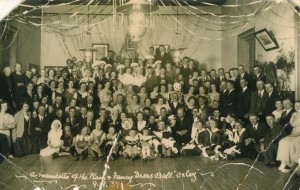 Fancy Dress Ball held at the Oxley Shire Hall, 1937
Fancy Dress Ball held at the Oxley Shire Hall, 1937
The hall became the shire headquarters and a focal point for many community events. Following restorations the hall continues to be a centre for community activities. “About 350 people packed into the hall for the Grand Opening Ball and danced from 8pm until 5am.”
Reserves and Parks
The Oxley Reserve was also formed in 1865. The reserve covers 47 hectares and is set in natural bushland on the King River. It was used for informal gatherings such as picnics, swimming, fishing, walking and bike riding as well as formal activities such as football, cricket, tennis and horse riding competitions.
Oxley Picnic Day circa 1900 – In the 1900’s the annual Oxley Picnic Day would attract 3000 people from all over Victoria who would camp the weekend and enjoy tennis, footraces, gymkhana events and games. The reserve is still used for recreational purposes today.
Oxley War Memorial
In 1922 a memorial was erected in Oxley in memory of the many residents of the shire who served in the First World War. It was funded by public subscription. Later it was moved to its present site in the Memorial Park and is the focus for the annual Remembrance Day service.
Visit the Virtual War Memorial of Australia “OXLEY WAR MEMORIAL” lists local names of those who sacrificed their lives for our freedom as we know it today.
Oxley School Children, 1905
Lost Oxley Facebook Page or Wangaratta Historical Society or Wangaratta Family History Society.




